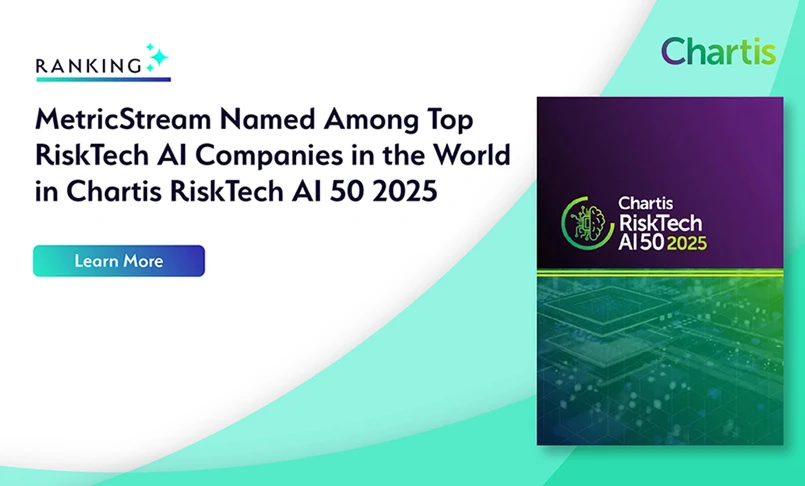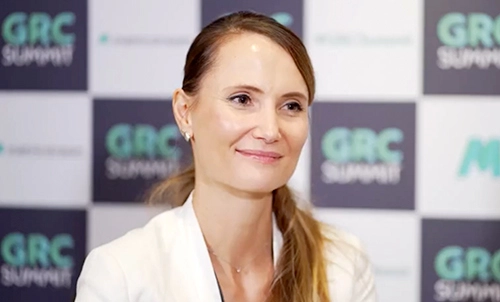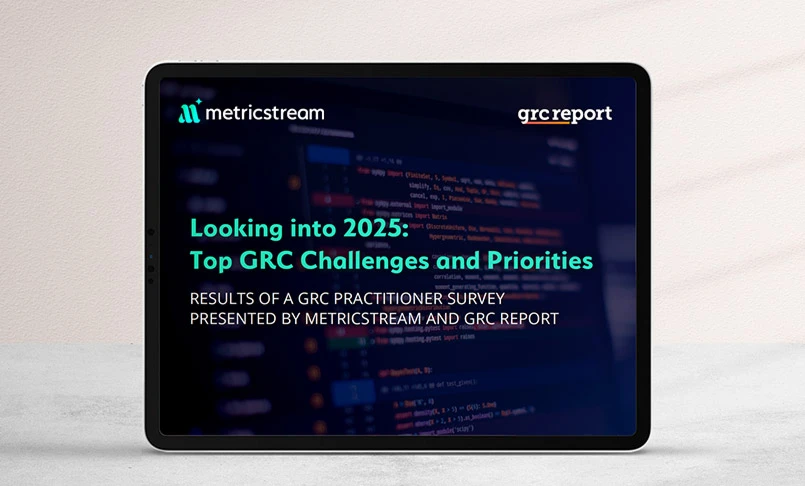Introduction
In today’s digital landscape, enterprises depend heavily on technology to operate efficiently, manage sensitive data, and ensure uninterrupted business continuity. However, this reliance exposes them to increasingly sophisticated threats such as ransomware, insider breaches, and cloud vulnerabilities. For example, over 80% of data breaches in 2023 were linked to cloud storage. Additionally, 75% of organizations experienced at least one ransomware attack in the past year, with the average ransomware recovery cost reaching $2.73 million. Amid these risks, IT general controls (ITGC)—such as access controls, change management, and backup/recovery processes—serve as the critical foundation for ensuring system integrity, reliability, and security.
This article dives deep into ITGC ,examining its core components, implementation strategies, relevant compliance frameworks, and best practices for maintaining robust controls in the face of evolving threats.
Key Takeaways
- IT General Controls are essential for ensuring the proper functioning and security of IT systems.
- They form the foundation for operational controls and compliance with regulatory requirements.
- Key components include access controls, change management, backup and recovery, and system operations.
- ITGC compliance frameworks like SOX, ISO 27001, and COBIT provide structured approaches to governance.
- Regular audits and continuous monitoring are critical for maintaining ITGC effectiveness.
What are IT General Controls (ITGC)?
IT general controls (ITGCs) are a set of policies and procedures that help manage and protect an organization’s IT systems. They ensure that systems function reliably, data remains secure and accurate, and any changes are properly controlled and documented.
Categories of ITGC include:
- Logical Access Controls: Protecting data and systems from unauthorized access.
- Change Management Controls: Ensuring changes to systems and applications are authorized and tested.
- Backup and Recovery Controls: Guaranteeing data availability and integrity in case of system failures. IT Operations Controls: Managing day-to-day IT operations efficiently and securely.
- IT Operations Controls: Managing day-to-day IT operations efficiently and securely.
Differences Between ITGC and ITAC
When it comes to managing IT risks and ensuring data integrity, two critical control categories are often discussed: IT General Controls (ITGC) and IT Application Controls (ITAC). Though they work hand-in-hand, they serve distinct purposes and operate at different layers of the IT environment.
What Are ITGC and ITAC?
- IT General Controls (ITGC) focus on the overall IT infrastructure and ensure that the systems supporting business applications are secure, reliable, and well-managed.
- IT Application Controls (ITAC), on the other hand, are embedded within individual software applications and are specific to the processing of transactions and data within those applications.
Key Differences Between ITGC and ITAC
| Feature | IT General Controls (ITGC) | IT Application Controls (ITAC) |
|---|---|---|
| Scope | Broad, covering entire IT environment | Narrow, focused on individual business applications |
| Focus Area | Infrastructure, systems, and processes | Data input, processing, output, and storage within applications |
| Examples | Access management, backup and recovery, change management | Data validation checks, approval workflows, error handling |
| Objective | Ensure system reliability and support control environment | Ensure accuracy, completeness, and authorization of transactions |
| Who Uses Them | IT administrators, auditors, compliance teams | Business users, process owners, application developers |
| Audit Relevance | Evaluated to assess the foundation for application controls | Assessed to verify the integrity of specific business processes |
How ITGC and ITAC Work Together
Think of ITGC as the foundation—without strong general controls, the reliability of application-level controls may be compromised. For example, if user access controls (an ITGC) are weak, even the best approval workflow inside an application (an ITAC) could be overridden or misused.
Together, ITGC and ITAC form a layered approach to risk mitigation. By ensuring both the system environment and the application processes are secure and well-controlled, organizations can maintain the integrity, availability, and confidentiality of their data.
While ITGC and ITAC serve different functions, both are crucial for building a strong internal control framework. Understanding the distinction helps organizations design more effective audits, strengthen IT governance, and ensure end-to-end data reliability.
Why is ITGC Important?
ITGCs are vital for organizations because they:
- Safeguards Data Integrity and Security: By controlling access and monitoring activities, ITGC prevents unauthorized alterations to data.
- Enable Compliance with Regulations: Adhering to ITGC frameworks helps organizations meet legal and regulatory requirements, reducing the risk of fines or penalties.
- Enhance Operational Efficiency: Proper controls streamline IT processes, minimize downtime, and ensure business continuity.
- Mitigate Risks: ITGCs provide a proactive approach to identifying and addressing vulnerabilities in the IT environment.
- Build Stakeholder Confidence: Robust ITGC demonstrates an organization’s commitment to security, reliability, and accountability, fostering stakeholder trust.
Components of ITGC
The core components of IT General Controls include:
- Access Controls:
- Restrict access to IT systems and data based on roles and responsibilities.
- Implement measures such as password policies, multi-factor authentication (MFA), and user account management.
- Change Management:
- Establish processes for planning, testing, and approving changes to IT systems and applications.
- Maintain documentation of all changes for accountability and audit purposes.
- Backup and Recovery:
- Regularly back up critical data to secure locations.
- Test recovery procedures to ensure they work effectively in case of data loss or system failure.
- IT Operations:
- Monitor system performance and availability.
- Automate routine tasks and implement incident response protocols to address system issues promptly.
- System Development and Maintenance:
- Ensure secure software development practices.
- Conduct regular testing and updates to maintain system functionality and security.
ITGC Examples: Key Areas of Control in IT Environments
IT General Controls (ITGCs) form the backbone of any organization’s IT risk management framework. These controls are designed to ensure the secure, stable, and reliable functioning of IT systems that support business operations. While they are broad in scope, they typically fall into a few core categories. Below are some common and essential examples of ITGCs in practice:
1. Access Controls
Access controls help ensure that only authorized users can access specific systems, applications, and data.
Examples:
- Role-based access control (RBAC) policies that assign system privileges based on job roles.
- Multi-factor authentication (MFA) for accessing sensitive systems.
- Periodic user access reviews to remove inactive or unauthorized users.
- Segregation of duties to prevent conflicts of interest or fraud.
Why It Matters: Weak access controls can lead to data breaches, insider threats, and regulatory violations.
2. Change Management Controls
These controls govern how changes are made to IT systems and applications to ensure that updates are authorized, tested, and properly documented.
Examples:
- Approval workflows before implementing software or system changes.
- Version control and change logs for tracking modifications.
- Testing environments to validate changes before production deployment.
- Change advisory boards (CABs) to oversee and assess risks related to updates.
Why It Matters: Poor change management can result in system downtime, data corruption, and compliance issues.
3. Data Backup and Recovery Controls
These controls ensure that data is regularly backed up and can be recovered in case of hardware failure, cyberattacks, or other disasters.
Examples:
- Scheduled backups of databases, servers, and user data.
- Off-site or cloud-based storage of backup data.
- Routine testing of disaster recovery plans and backup restorations.
- Use of automated tools to monitor backup success and failures.
Why It Matters: Inadequate backup procedures can lead to permanent data loss and severe business disruption.
4. System Development and Acquisition Controls
These controls apply to how new systems are developed or purchased and how they're integrated into the existing IT environment.
Examples:
- Security and compliance checks before purchasing new software.
- User acceptance testing (UAT) before system rollout.
- Integration testing with existing infrastructure.
- Vendor assessments to evaluate third-party software security.
Why It Matters: Flawed systems or integrations can introduce vulnerabilities and operational inefficiencies.
5. IT Operations Controls
These include day-to-day operational activities that keep IT systems running smoothly.
Examples:
- Monitoring of system performance and logs.
- Scheduled maintenance and patch management.
- Incident and problem management processes.
- Capacity planning to support growth and avoid outages.
Why It Matters: A lack of operational oversight can cause system failures and extended downtime.
6. Physical and Environmental Controls
Although often overlooked in discussions about ITGCs, physical controls help protect hardware and infrastructure.
Examples:
- Access badges or biometric scanners for data center entry.
- Environmental sensors (for temperature, humidity, etc.).
- Fire suppression systems and surge protectors.
- Security cameras and 24/7 surveillance.
Why It Matters: Physical threats—whether environmental or human—can disrupt or destroy critical IT assets.
Robust IT General Controls are essential for building a secure and reliable IT environment. By implementing a wide range of controls—from access and change management to data recovery and physical security—organizations can significantly reduce their risk exposure and ensure compliance with regulatory standards such as SOX, HIPAA, and ISO 27001.
If you’re looking to assess or improve your ITGC framework, start by evaluating these core control areas and identifying any gaps that could impact your organization’s resilience.
How to Implement ITGC?
Implementing ITGC involves a structured approach:
- Assess the Current Environment:
- Conduct a risk assessment to identify vulnerabilities in the IT infrastructure.
- Evaluate existing controls and their effectiveness.
- Define Policies and Procedures:
- Develop comprehensive IT policies aligned with organizational objectives and compliance requirements.
- Clearly document procedures for access management, change management, and incident response.
- Deploy Technology Solutions:
- Use tools for access control, monitoring, and auditing.
- Implement backup solutions and disaster recovery plans.
- Train Personnel:
- Educate employees on ITGC policies, emphasizing their roles in maintaining security.
- Provide specialized training for IT staff on implementing and monitoring controls.
- Monitor and Review:
- Continuously monitor IT systems for compliance with controls.
- Periodically review and update controls to address emerging threats and organizational changes.
ITGC Compliance Frameworks
Several compliance frameworks guide organizations in implementing effective IT General Controls. Key frameworks include:
- SOX (Sarbanes-Oxley Act):
- Mandates internal controls for financial reporting, emphasizing ITGC in safeguarding data integrity.
- ISO 27001:
- Provides a systematic approach to managing sensitive information and ensuring its confidentiality, integrity, and availability.
- COBIT (Control Objectives for Information and Related Technologies):
- Offers a framework for IT governance, aligning IT processes with business objectives.
- NIST (National Institute of Standards and Technology):
- Outlines best practices for cybersecurity and risk management, including ITGC.
- HIPAA (Health Insurance Portability and Accountability Act):
- It requires healthcare organizations to implement ITGC to protect patient data.
How to Perform an ITGC Audit?
An ITGC audit evaluates the effectiveness of controls within an organization’s IT systems. It includes planning the overall scope of the audit, assessing current documents and procedures, testing those parameters, reporting on any gaps and having a plan in place to address those gaps. Here’s how to perform the audit in detail:
- Planning:
- Define the scope of the audit, focusing on critical systems and processes.
- Identify relevant compliance frameworks and standards.
- Assessment:
- Review existing policies, procedures, and documentation.
- Evaluate controls for access management, change management, backup, and operations.
- Testing:
- Perform tests to verify the implementation and effectiveness of controls.
- Use tools and techniques such as penetration testing, log analysis, and interviews.
- Reporting:
- Document findings, highlighting areas of non-compliance or weaknesses.
- Provide actionable recommendations for improvement.
- Follow-Up:
- Monitor the implementation of corrective actions.
- Schedule periodic audits to ensure ongoing compliance.
How to Maintain Strong IT General Controls?
Maintaining robust ITGC is an ongoing process that requires the following:
- Regular Updates:
- Keep IT systems and controls updated to address evolving threats and technologies.
- Continuous Monitoring:
- Use automated tools to monitor system activity, detect anomalies, and generate alerts.
- Employee Awareness:
- Conduct regular training and awareness programs to keep employees informed about ITGC policies and best practices.
- Risk Management:
- Periodically assess risks and adjust controls to mitigate them effectively.
- Collaboration Across Teams:
- Foster collaboration between IT, compliance, and business teams to ensure alignment in maintaining controls.
- Audit and Feedback:
- Conduct routine audits and act on feedback to refine controls and address gaps.
Why MetricStream?
IT General Controls are indispensable for modern organizations striving to secure their IT environments, achieve compliance, and maintain operational excellence. By understanding the components of ITGC, implementing structured processes, and adhering to compliance frameworks, organizations can build a resilient IT infrastructure. Continuous monitoring, regular audits, and a proactive approach to risk management will further ensure the sustainability and effectiveness of ITGC. Adopting these practices not only minimizes risks but also enhances stakeholder confidence and organizational reputation.
With MetricStream’s CyberGRC solutions, including IT and Cyber Compliance management and IT and Cyber Policy management enables, organizations have access to a consolidated framework that can help implement and keep track of compliance with any IT regulations. For more information, request a personalized demo.
Frequently Asked Questions (FAQ)
Which is an example of an IT general control?
An example of an IT general control is implementing user access controls to restrict unauthorized access to critical systems and data.
What are common challenges in implementing ITGC?
Common challenges include insufficient resources, lack of employee awareness, resistance to change, and difficulty in keeping up with evolving technology and regulatory requirements.
Who is responsible for implementing ITGC in an organization?
Implementing ITGC is typically the responsibility of the IT department, with oversight from senior management and collaboration with compliance and risk management teams.
Why are ITGCs important?
ITGCs help ensure the security, integrity, and reliability of IT systems, reducing risks related to data breaches, system failures, and compliance violations.
How to Strengthen Your ITGCs
Regularly review and update access controls, enforce strong change management processes, automate monitoring, and align controls with relevant compliance frameworks like SOX or ISO 27001.
In today’s digital landscape, enterprises depend heavily on technology to operate efficiently, manage sensitive data, and ensure uninterrupted business continuity. However, this reliance exposes them to increasingly sophisticated threats such as ransomware, insider breaches, and cloud vulnerabilities. For example, over 80% of data breaches in 2023 were linked to cloud storage. Additionally, 75% of organizations experienced at least one ransomware attack in the past year, with the average ransomware recovery cost reaching $2.73 million. Amid these risks, IT general controls (ITGC)—such as access controls, change management, and backup/recovery processes—serve as the critical foundation for ensuring system integrity, reliability, and security.
This article dives deep into ITGC ,examining its core components, implementation strategies, relevant compliance frameworks, and best practices for maintaining robust controls in the face of evolving threats.
- IT General Controls are essential for ensuring the proper functioning and security of IT systems.
- They form the foundation for operational controls and compliance with regulatory requirements.
- Key components include access controls, change management, backup and recovery, and system operations.
- ITGC compliance frameworks like SOX, ISO 27001, and COBIT provide structured approaches to governance.
- Regular audits and continuous monitoring are critical for maintaining ITGC effectiveness.
IT general controls (ITGCs) are a set of policies and procedures that help manage and protect an organization’s IT systems. They ensure that systems function reliably, data remains secure and accurate, and any changes are properly controlled and documented.
Categories of ITGC include:
- Logical Access Controls: Protecting data and systems from unauthorized access.
- Change Management Controls: Ensuring changes to systems and applications are authorized and tested.
- Backup and Recovery Controls: Guaranteeing data availability and integrity in case of system failures. IT Operations Controls: Managing day-to-day IT operations efficiently and securely.
- IT Operations Controls: Managing day-to-day IT operations efficiently and securely.
When it comes to managing IT risks and ensuring data integrity, two critical control categories are often discussed: IT General Controls (ITGC) and IT Application Controls (ITAC). Though they work hand-in-hand, they serve distinct purposes and operate at different layers of the IT environment.
What Are ITGC and ITAC?
- IT General Controls (ITGC) focus on the overall IT infrastructure and ensure that the systems supporting business applications are secure, reliable, and well-managed.
- IT Application Controls (ITAC), on the other hand, are embedded within individual software applications and are specific to the processing of transactions and data within those applications.
Key Differences Between ITGC and ITAC
| Feature | IT General Controls (ITGC) | IT Application Controls (ITAC) |
|---|---|---|
| Scope | Broad, covering entire IT environment | Narrow, focused on individual business applications |
| Focus Area | Infrastructure, systems, and processes | Data input, processing, output, and storage within applications |
| Examples | Access management, backup and recovery, change management | Data validation checks, approval workflows, error handling |
| Objective | Ensure system reliability and support control environment | Ensure accuracy, completeness, and authorization of transactions |
| Who Uses Them | IT administrators, auditors, compliance teams | Business users, process owners, application developers |
| Audit Relevance | Evaluated to assess the foundation for application controls | Assessed to verify the integrity of specific business processes |
How ITGC and ITAC Work Together
Think of ITGC as the foundation—without strong general controls, the reliability of application-level controls may be compromised. For example, if user access controls (an ITGC) are weak, even the best approval workflow inside an application (an ITAC) could be overridden or misused.
Together, ITGC and ITAC form a layered approach to risk mitigation. By ensuring both the system environment and the application processes are secure and well-controlled, organizations can maintain the integrity, availability, and confidentiality of their data.
While ITGC and ITAC serve different functions, both are crucial for building a strong internal control framework. Understanding the distinction helps organizations design more effective audits, strengthen IT governance, and ensure end-to-end data reliability.
ITGCs are vital for organizations because they:
- Safeguards Data Integrity and Security: By controlling access and monitoring activities, ITGC prevents unauthorized alterations to data.
- Enable Compliance with Regulations: Adhering to ITGC frameworks helps organizations meet legal and regulatory requirements, reducing the risk of fines or penalties.
- Enhance Operational Efficiency: Proper controls streamline IT processes, minimize downtime, and ensure business continuity.
- Mitigate Risks: ITGCs provide a proactive approach to identifying and addressing vulnerabilities in the IT environment.
- Build Stakeholder Confidence: Robust ITGC demonstrates an organization’s commitment to security, reliability, and accountability, fostering stakeholder trust.
The core components of IT General Controls include:
- Access Controls:
- Restrict access to IT systems and data based on roles and responsibilities.
- Implement measures such as password policies, multi-factor authentication (MFA), and user account management.
- Change Management:
- Establish processes for planning, testing, and approving changes to IT systems and applications.
- Maintain documentation of all changes for accountability and audit purposes.
- Backup and Recovery:
- Regularly back up critical data to secure locations.
- Test recovery procedures to ensure they work effectively in case of data loss or system failure.
- IT Operations:
- Monitor system performance and availability.
- Automate routine tasks and implement incident response protocols to address system issues promptly.
- System Development and Maintenance:
- Ensure secure software development practices.
- Conduct regular testing and updates to maintain system functionality and security.
IT General Controls (ITGCs) form the backbone of any organization’s IT risk management framework. These controls are designed to ensure the secure, stable, and reliable functioning of IT systems that support business operations. While they are broad in scope, they typically fall into a few core categories. Below are some common and essential examples of ITGCs in practice:
1. Access Controls
Access controls help ensure that only authorized users can access specific systems, applications, and data.
Examples:
- Role-based access control (RBAC) policies that assign system privileges based on job roles.
- Multi-factor authentication (MFA) for accessing sensitive systems.
- Periodic user access reviews to remove inactive or unauthorized users.
- Segregation of duties to prevent conflicts of interest or fraud.
Why It Matters: Weak access controls can lead to data breaches, insider threats, and regulatory violations.
2. Change Management Controls
These controls govern how changes are made to IT systems and applications to ensure that updates are authorized, tested, and properly documented.
Examples:
- Approval workflows before implementing software or system changes.
- Version control and change logs for tracking modifications.
- Testing environments to validate changes before production deployment.
- Change advisory boards (CABs) to oversee and assess risks related to updates.
Why It Matters: Poor change management can result in system downtime, data corruption, and compliance issues.
3. Data Backup and Recovery Controls
These controls ensure that data is regularly backed up and can be recovered in case of hardware failure, cyberattacks, or other disasters.
Examples:
- Scheduled backups of databases, servers, and user data.
- Off-site or cloud-based storage of backup data.
- Routine testing of disaster recovery plans and backup restorations.
- Use of automated tools to monitor backup success and failures.
Why It Matters: Inadequate backup procedures can lead to permanent data loss and severe business disruption.
4. System Development and Acquisition Controls
These controls apply to how new systems are developed or purchased and how they're integrated into the existing IT environment.
Examples:
- Security and compliance checks before purchasing new software.
- User acceptance testing (UAT) before system rollout.
- Integration testing with existing infrastructure.
- Vendor assessments to evaluate third-party software security.
Why It Matters: Flawed systems or integrations can introduce vulnerabilities and operational inefficiencies.
5. IT Operations Controls
These include day-to-day operational activities that keep IT systems running smoothly.
Examples:
- Monitoring of system performance and logs.
- Scheduled maintenance and patch management.
- Incident and problem management processes.
- Capacity planning to support growth and avoid outages.
Why It Matters: A lack of operational oversight can cause system failures and extended downtime.
6. Physical and Environmental Controls
Although often overlooked in discussions about ITGCs, physical controls help protect hardware and infrastructure.
Examples:
- Access badges or biometric scanners for data center entry.
- Environmental sensors (for temperature, humidity, etc.).
- Fire suppression systems and surge protectors.
- Security cameras and 24/7 surveillance.
Why It Matters: Physical threats—whether environmental or human—can disrupt or destroy critical IT assets.
Robust IT General Controls are essential for building a secure and reliable IT environment. By implementing a wide range of controls—from access and change management to data recovery and physical security—organizations can significantly reduce their risk exposure and ensure compliance with regulatory standards such as SOX, HIPAA, and ISO 27001.
If you’re looking to assess or improve your ITGC framework, start by evaluating these core control areas and identifying any gaps that could impact your organization’s resilience.
Implementing ITGC involves a structured approach:
- Assess the Current Environment:
- Conduct a risk assessment to identify vulnerabilities in the IT infrastructure.
- Evaluate existing controls and their effectiveness.
- Define Policies and Procedures:
- Develop comprehensive IT policies aligned with organizational objectives and compliance requirements.
- Clearly document procedures for access management, change management, and incident response.
- Deploy Technology Solutions:
- Use tools for access control, monitoring, and auditing.
- Implement backup solutions and disaster recovery plans.
- Train Personnel:
- Educate employees on ITGC policies, emphasizing their roles in maintaining security.
- Provide specialized training for IT staff on implementing and monitoring controls.
- Monitor and Review:
- Continuously monitor IT systems for compliance with controls.
- Periodically review and update controls to address emerging threats and organizational changes.
Several compliance frameworks guide organizations in implementing effective IT General Controls. Key frameworks include:
- SOX (Sarbanes-Oxley Act):
- Mandates internal controls for financial reporting, emphasizing ITGC in safeguarding data integrity.
- ISO 27001:
- Provides a systematic approach to managing sensitive information and ensuring its confidentiality, integrity, and availability.
- COBIT (Control Objectives for Information and Related Technologies):
- Offers a framework for IT governance, aligning IT processes with business objectives.
- NIST (National Institute of Standards and Technology):
- Outlines best practices for cybersecurity and risk management, including ITGC.
- HIPAA (Health Insurance Portability and Accountability Act):
- It requires healthcare organizations to implement ITGC to protect patient data.
An ITGC audit evaluates the effectiveness of controls within an organization’s IT systems. It includes planning the overall scope of the audit, assessing current documents and procedures, testing those parameters, reporting on any gaps and having a plan in place to address those gaps. Here’s how to perform the audit in detail:
- Planning:
- Define the scope of the audit, focusing on critical systems and processes.
- Identify relevant compliance frameworks and standards.
- Assessment:
- Review existing policies, procedures, and documentation.
- Evaluate controls for access management, change management, backup, and operations.
- Testing:
- Perform tests to verify the implementation and effectiveness of controls.
- Use tools and techniques such as penetration testing, log analysis, and interviews.
- Reporting:
- Document findings, highlighting areas of non-compliance or weaknesses.
- Provide actionable recommendations for improvement.
- Follow-Up:
- Monitor the implementation of corrective actions.
- Schedule periodic audits to ensure ongoing compliance.
Maintaining robust ITGC is an ongoing process that requires the following:
- Regular Updates:
- Keep IT systems and controls updated to address evolving threats and technologies.
- Continuous Monitoring:
- Use automated tools to monitor system activity, detect anomalies, and generate alerts.
- Employee Awareness:
- Conduct regular training and awareness programs to keep employees informed about ITGC policies and best practices.
- Risk Management:
- Periodically assess risks and adjust controls to mitigate them effectively.
- Collaboration Across Teams:
- Foster collaboration between IT, compliance, and business teams to ensure alignment in maintaining controls.
- Audit and Feedback:
- Conduct routine audits and act on feedback to refine controls and address gaps.
IT General Controls are indispensable for modern organizations striving to secure their IT environments, achieve compliance, and maintain operational excellence. By understanding the components of ITGC, implementing structured processes, and adhering to compliance frameworks, organizations can build a resilient IT infrastructure. Continuous monitoring, regular audits, and a proactive approach to risk management will further ensure the sustainability and effectiveness of ITGC. Adopting these practices not only minimizes risks but also enhances stakeholder confidence and organizational reputation.
With MetricStream’s CyberGRC solutions, including IT and Cyber Compliance management and IT and Cyber Policy management enables, organizations have access to a consolidated framework that can help implement and keep track of compliance with any IT regulations. For more information, request a personalized demo.
Which is an example of an IT general control?
An example of an IT general control is implementing user access controls to restrict unauthorized access to critical systems and data.
What are common challenges in implementing ITGC?
Common challenges include insufficient resources, lack of employee awareness, resistance to change, and difficulty in keeping up with evolving technology and regulatory requirements.
Who is responsible for implementing ITGC in an organization?
Implementing ITGC is typically the responsibility of the IT department, with oversight from senior management and collaboration with compliance and risk management teams.
Why are ITGCs important?
ITGCs help ensure the security, integrity, and reliability of IT systems, reducing risks related to data breaches, system failures, and compliance violations.
How to Strengthen Your ITGCs
Regularly review and update access controls, enforce strong change management processes, automate monitoring, and align controls with relevant compliance frameworks like SOX or ISO 27001.








